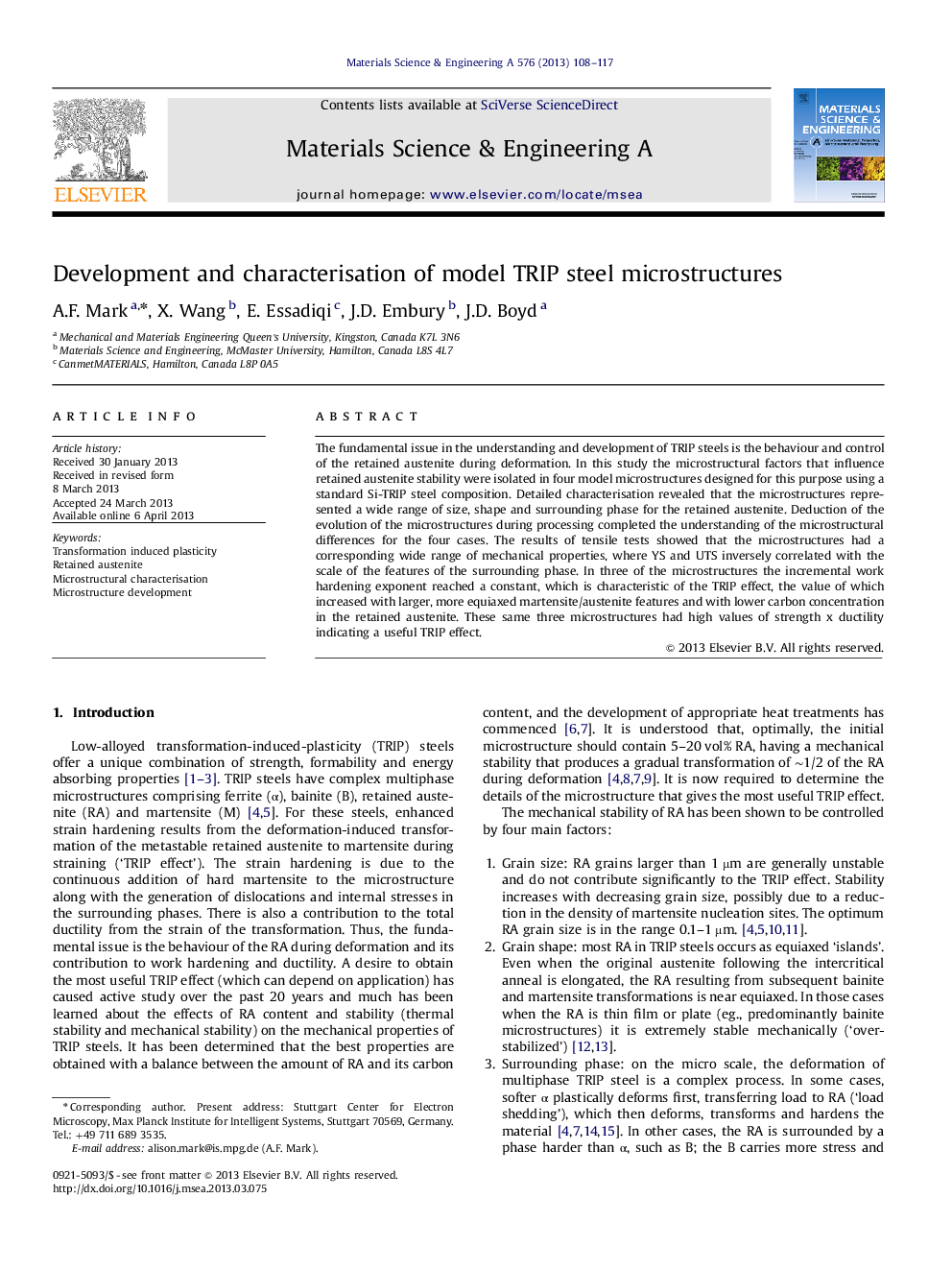| Article ID | Journal | Published Year | Pages | File Type |
|---|---|---|---|---|
| 7983076 | Materials Science and Engineering: A | 2013 | 10 Pages |
Abstract
The fundamental issue in the understanding and development of TRIP steels is the behaviour and control of the retained austenite during deformation. In this study the microstructural factors that influence retained austenite stability were isolated in four model microstructures designed for this purpose using a standard Si-TRIP steel composition. Detailed characterisation revealed that the microstructures represented a wide range of size, shape and surrounding phase for the retained austenite. Deduction of the evolution of the microstructures during processing completed the understanding of the microstructural differences for the four cases. The results of tensile tests showed that the microstructures had a corresponding wide range of mechanical properties, where YS and UTS inversely correlated with the scale of the features of the surrounding phase. In three of the microstructures the incremental work hardening exponent reached a constant, which is characteristic of the TRIP effect, the value of which increased with larger, more equiaxed martensite/austenite features and with lower carbon concentration in the retained austenite. These same three microstructures had high values of strength x ductility indicating a useful TRIP effect.
Keywords
Related Topics
Physical Sciences and Engineering
Materials Science
Materials Science (General)
Authors
A.F. Mark, X. Wang, E. Essadiqi, J.D. Embury, J.D. Boyd,
